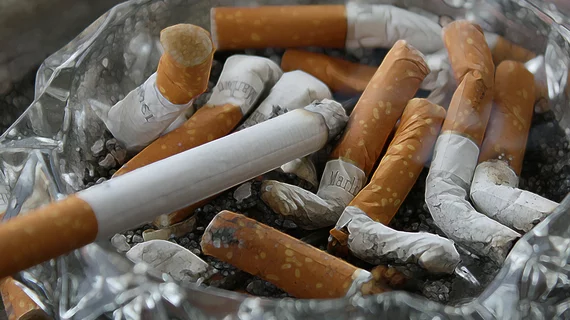Smoking impacts effectiveness of embolization procedure
Embolization procedures to treat blood vessel abnormalities in the lungs are less effective if the patient is a smoker, according to a new study published in Radiology.
The authors examined data from 103 patients with hereditary hemorrhagic telangiectasia (HHT) who underwent embolization to block pulmonary arteriovenous malformations (PAVMs). All patients were treated from January 2000 to August 2017.
Overall, there was a five-year PAVM persistence rate of 17.3%. Patients were more likely to experience PAVM persistence after treatment if they smokers than if they had never smoked. The five-year persistence rate was 12.2% for nonsmokers, 21.9% for smokers with 20 pack-years or less and 37.8% or smokers with more than 20 pack-years. In addition, the five-year persistence rate of patients who reported regular tobacco use at the time of the procedure was (26.3%) nearly twice the rate of inactive smokers (13.5%).
“Smoking creates an inflammatory response,” senior author Sanjay Misra, MD, department of radiology at Mayo Clinic in Rochester, Minnesota, said in a prepared statement. “More inflammation creates a greater likelihood of failure for smokers compared to those who never smoked.”
Misra also noted that patients are urged to stop smoking before being treated for PAVMs.
“Smoking cessation is very important if these patients want to help themselves and avoid further procedures,” she said in the same statement.
Misra and colleagues did write that their research had certain limitations. It was a retrospective study for instance, and included a relatively small sample size. The team added that “verification of these results in a multicenter study would provide further validation of our findings.”

